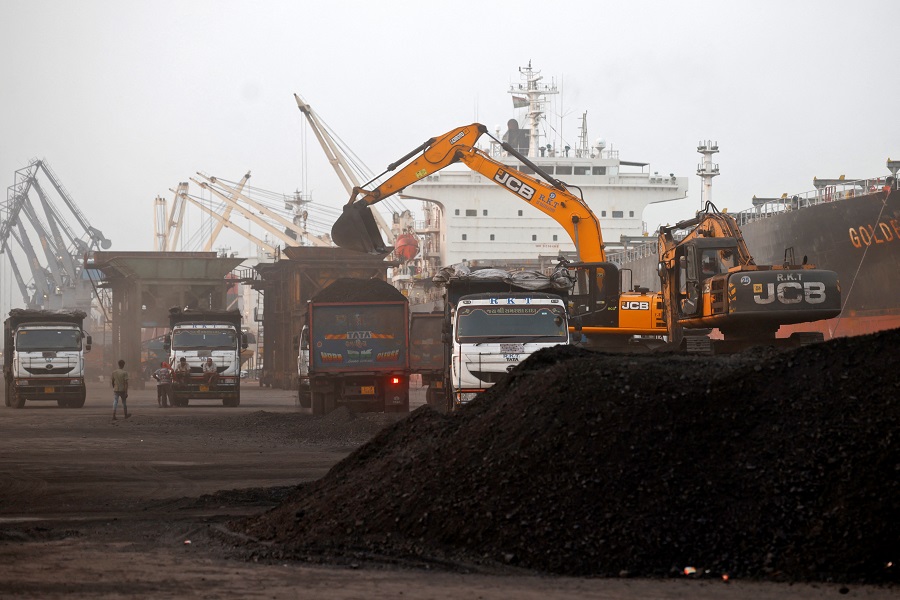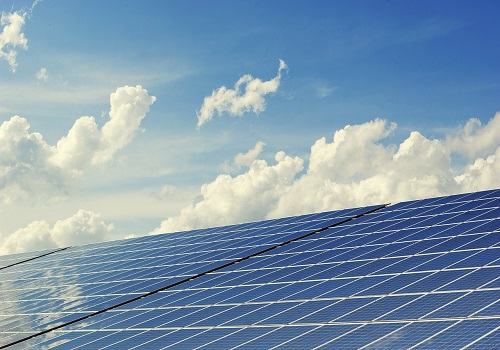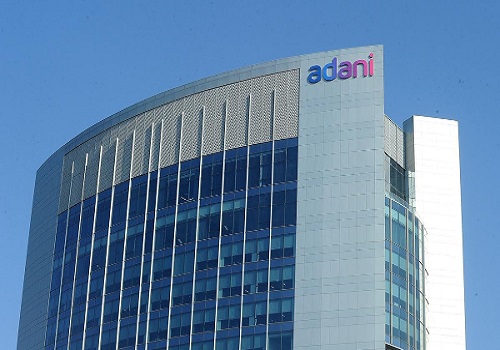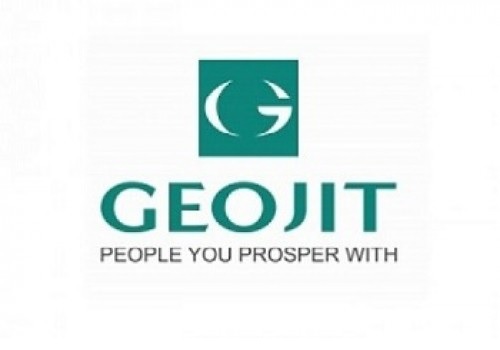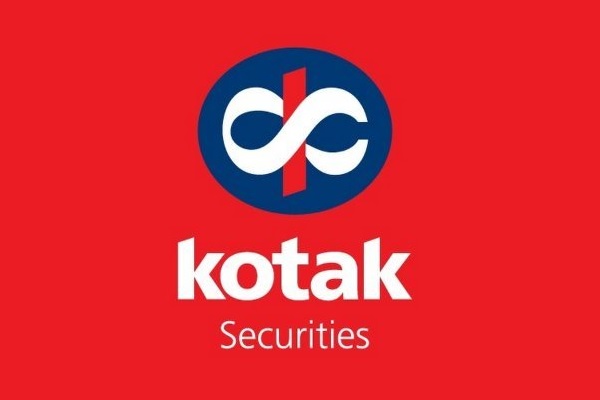Naturalgas trading range for the day is 267.3-290.7 - Kedia Advisory

Gold
Gold prices declined by 0.5% to settle at ?95,937 as easing trade tensions between the U.S. and Europe reduced safe-haven demand. The pullback came after President Donald Trump agreed to delay the imposition of a 50% tariff on European goods until July 9, stepping back from the previously announced June 1 implementation. However, market anxiety remains, with Trump warning Apple of a potential 25% tariff if it fails to shift iPhone production to the U.S. Despite the current dip, gold gained nearly 5% last week, buoyed by persistent concerns over the U.S. fiscal outlook. A new tax bill passed by the House could widen the U.S. budget deficit by nearly $3 trillion over the next decade, lending long-term support to gold. On the global front, China’s gold imports via Hong Kong more than doubled in April to 58.61 metric tons from 21.07 tons in March, reflecting robust demand in the world's largest gold consumer. However, physical demand in India remained muted due to high global prices and a weaker rupee, with dealers offering discounts of up to $49 an ounce. Technically, the market is under long liquidation, as seen by a 10.25% drop in open interest to 8,931. Gold is currently getting support at ?95,600, and a break below could test Rs 95,255. On the upside, resistance is at Rs 96,195, and a move above this level may lead prices toward ?96,445.
Trading Ideas:
* Gold trading range for the day is 95255-96445.
* Gold dropped after President Trump agreed to delay the implementation of a 50% tariff on European goods
* China imported a total of 58.61 metric tons in April, up from 21.071 tons in March
* BofA: Gold sees $2.9 bln weekly outflow, biggest since April 2013 and third biggest ever
Silver
Silver prices slipped marginally by 0.05% to settle at ?98,003, as safe-haven demand weakened following U.S. President Donald Trump’s decision to delay the imposition of a 50% tariff on European Union goods until July 9. This move eased immediate trade tensions, dampening bullion sentiment. However, dovish commentary from Federal Reserve Governor Christopher Waller—hinting at possible rate cuts later this year depending on tariff policy developments—provided some underlying support to the precious metal. On the industrial front, silver drew strength from China's rapid expansion in renewable energy, particularly with its wind and solar capacity nearing 1,500 GW, including a 60 GW surge in photovoltaic installations during Q1. This solidifies silver's growing role in green technologies, especially in solar panel manufacturing. Silver’s industrial demand remains a dominant factor in market dynamics, with fabrication expected to grow by 3% in 2025 and surpass 700 million ounces for the first time. Global silver demand is projected to remain steady at 1.20 billion ounces, balancing gains in industrial use and investment with declines in jewelry and silverware demand—particularly in India, where high prices are expected to cause a double-digit drop in consumption. Technically, the silver market is under fresh selling pressure with open interest rising 1.15% to 17,348. Support is now at Rs 97,610, below which prices may test Rs 97,220. On the upside, resistance lies at Rs 98,345, and a breakout could take prices toward Rs 98,690.
Trading Ideas:
* Silver trading range for the day is 97220-98690.
* Silver dropped after U.S. President Trump dropped his threat to impose 50% tariffs on EU.
* Trump restored a July 9 deadline to allow for talks between Washington and the European Union to produce a deal.
* Dollar remains under pressure as Trump’s shifting trade stance hits investor confidence.
Crude oil
Crude oil prices saw a marginal decline of 0.08%, settling at Rs 5,255 amid market speculation that OPEC+ may decide to increase output by an additional 411,000 barrels per day (bpd) for July during its upcoming meeting. The alliance has already adjusted output targets higher by approximately 1 million bpd for April through June, with expectations that the remaining 2.2 million bpd in voluntary cuts may be fully phased out by October. The easing of U.S.-EU trade tensions, following President Trump’s extension of the tariff deadline, also contributed to the softening in crude prices by alleviating some demand-side concerns. Meanwhile, U.S. supply-side data painted a mixed picture. Baker Hughes reported a drop in the number of active U.S. oil rigs by eight to 465, the lowest level since November 2021, signaling possible future supply constraints. However, inventory data from the EIA showed a surprising build in U.S. crude, gasoline, and distillate stocks. Crude inventories rose by 1.3 million barrels, contrary to expectations for a draw, while gasoline and distillates also saw unexpected increases, adding downward pressure to prices. Technically, crude is under fresh selling pressure, with open interest rising by 0.39% to 11,699. Support is seen at ?5,226, below which prices may test Rs 5,196. Resistance is likely at Rs 5,289, and a break above could push prices toward Rs 5,322.
Trading Ideas:
* Crudeoil trading range for the day is 5196-5322.
* Crude oil dropped on hopes OPEC+ may raise July output by 411,000 bpd.
* Reports of limited progress in US-Iran nuclear talks alleviated concerns of more Iranian oil returning to global markets.
* U.S. firms cut the number of operating oil rigs by eight to 465 last week, the lowest since November 2021.
Natural gas
Natural gas prices declined by 0.89% to settle at ?278.8, weighed down by a smaller-than-expected drop in output and a downward revision in near-term demand forecasts. Despite a slight decline in daily production to 104.7 billion cubic feet per day (bcfd), down from 105.4 bcfd on average the previous week, output remains relatively high. This limited the bullish impact of Baker Hughes data showing a decrease in the number of active gas rigs in the U.S. by two, bringing the total to 98. The latest storage data also added pressure to prices. U.S. utilities injected 120 billion cubic feet (bcf) into storage for the week ending May 16, surpassing expectations of a 115 bcf build. This marked the largest weekly injection since September 2022 and the strongest pre-summer build since 2015. Though current storage levels are 12.3% lower than a year ago, they remain 3.9% above the five-year average, signaling comfortable supply heading into the high-demand summer season. Meanwhile, weather forecasts predict above-normal temperatures through June 7, but LSEG projections show a dip in demand to 96.1 bcfd next week before a slight rebound. The U.S. Energy Information Administration (EIA) continues to forecast record output and consumption levels for 2025, projecting production to rise to 104.9 bcfd and consumption to 91.3 bcfd. Technically, the market is under long liquidation, with open interest falling sharply by 29.27% to 5,499. Support is established at Rs 273.1, below which prices may test Rs 267.3. On the upside, resistance is seen at Rs 284.8, and a break above could lead to Rs 290.7.
Trading Ideas:
* Naturalgas trading range for the day is 267.3-290.7.
* Natural gas eased on mild output drop, weaker-than-expected demand forecasts.
* The number of rigs drilling for natural gas in the United States fell by 2 to 98
* Gas stockpiles were currently around 4% above the five-year (2020-2024) average.
Copper
Copper prices edged down by 0.06% to ?866.35 as mounting concerns over manufacturing demand overshadowed recent supportive measures from the People’s Bank of China. While the PBoC implemented rate cuts and boosted liquidity to stimulate economic activity—particularly in the industrial sector—these efforts were offset by a growing supply outlook. The International Copper Study Group (ICSG) raised its global surplus forecast for 2025 to nearly 300,000 metric tons, driven by robust ore production in South America. This surplus outlook has prompted foreign traders to unwind long positions, particularly in the U.S., following President Trump’s tariff probe on copper imports. The inventory picture further supports bearish sentiment. Copper inventories on the Shanghai Futures Exchange fell 9% to 98,671 tons, and LME-registered stocks dropped 8% to 164,725 tons. However, a significant influx into COMEX warehouses pushed U.S. inventories up 61% since March, now at their highest since 2018. This reflects a strategic move by traders to front-run potential tariffs, leading to a narrowing of the U.S.-London copper futures spread and capping price gains. On the demand side, China’s copper imports in April held steady year-on-year at 438,000 tons, but cumulative imports for the first four months of 2025 fell 3.9%, signaling subdued consumption. Technically, the copper market is under fresh selling pressure with a 6.28% rise in open interest to 6,583, reflecting new short positions. Immediate support lies at ?864.3, with further downside potential to ?862.2. On the upside, resistance is seen at ?868.7, with a break above potentially testing ?871.
Trading Ideas:
* Copper trading range for the day is 862.2-871.
* Copper dropped as risks to manufacturing demand amplified the impact of ample copper supply.
* Copper inventories in warehouses monitored by the SHFE fell 9% to 98,671 tons.
* Stocks in the LME-registered warehouses lost 8% to 164,725 amid continuing inflows into the COMEX-owned warehouses.
Zinc
Zinc prices edged up by 0.35% to ?257.65 amid low-level buying in holiday-thin trade, despite lingering concerns around U.S.-China trade tensions. The temporary 90-day tariff truce between the U.S. and China has eased market anxiety for now, but the lack of long-term clarity continues to weigh on sentiment. Zinc inventories in Shanghai Futures Exchange-monitored warehouses fell by 4.9% week-on-week, underscoring a modest supply-side constraint. This tightening is largely due to increased smelter maintenance activities and low absolute inventory levels, which provided a bullish underpinning to zinc prices. On the production front, China’s refined zinc output rose by 1.6% month-on-month and nearly 10% year-on-year in April, with cumulative output for the first four months up just 0.3% YoY—lower than market expectations. Production growth in regions like Gansu, Qinghai, and Yunnan was partially offset by declines in Hunan and Guangxi. Globally, the zinc market surplus narrowed to 23,700 metric tons in March, down from 75,900 tons in February, according to the ILZSG. The Q1 2025 surplus totaled 143,000 tons, slightly below the 148,000-ton surplus during the same period last year, indicating a mild tightening in the global supply-demand balance. Technically, zinc is showing fresh buying interest, with a 4.06% increase in open interest to 2,254 contracts. Support is now at Rs 256.7, with further downside potential to Rs 255.7, while resistance lies at Rs 258.3; a break above this could see prices testing Rs 258.9.
Trading Ideas:
* Zinc trading range for the day is 255.7-258.9.
* Zinc rises on low-level buying in thin trade despite U.S. tariff uncertainty.
* The global zinc market surplus fell to 23,700 metric tons in March from 75,900 tons in February
* Zinc inventories in warehouses monitored by SHFE fell 4.9% from last Friday, the exchange said.
Aluminium
Aluminium prices slipped by 0.25% to ?237, pressured by ongoing global manufacturing concerns and signs of easing supply constraints. The decline came amid broader macroeconomic anxieties, including rising U.S. debt levels and a weakening global economic outlook. Market sentiment also softened after China cut its benchmark lending rates and major state banks reduced deposit rates in efforts to support slowing economic growth. Weak factory output and disappointing retail sales figures from China, alongside stagnant home prices, further added to bearish sentiment in the metals market. On the supply front, global primary aluminium production rose 2.2% year-on-year in April to 6.033 million tonnes, according to the International Aluminium Institute (IAI). China, the world's largest aluminium producer, saw a 4.2% year-on-year rise in output in April to 3.75 million metric tons. Cumulatively, production reached 14.79 million tons during January-April, up 3.4% year-on-year. Additionally, aluminium exports from China increased by 17% over the first ten months of the year, reaching 5.5 million tons, reflecting strong outbound shipments despite soft domestic demand. Meanwhile, aluminium inventories at Japan’s three major ports climbed 3.4% to 320,300 metric tons at the end of April. Technically, aluminium remains under fresh selling pressure, with open interest increasing by 4.11% to 4,106 contracts. Immediate support lies at Rs 236.5, with a break potentially taking prices down to Rs 236. On the upside, resistance is at Rs 237.7; a move above that could lead to a test of Rs 238.4.
Trading Ideas:
* Aluminium trading range for the day is 236-238.4.
* Aluminium dropped amid persistent concerns over global manufacturing and easing supply constraints.
* China cut benchmark lending rates for the first time since October, and major state banks lowered deposit rates.
* Global primary aluminium output in April rose 2.2% year on year to 6.033 million tonnes
Cottoncandy
Cottoncandy prices edged lower by 0.48% to ?53,470, weighed down by profit booking after recent gains spurred by lower domestic crop projections. The Cotton Association of India (CAI) has revised its production forecast for the 2024–25 season downward by 4 lakh bales to 291.30 lakh bales of 170 kg each, mainly due to reduced output in Maharashtra. This cut in estimates follows input from state member associations and reflects tighter supply conditions ahead. Total cotton supply until the end of March, including imports and opening stocks, is estimated at 306.83 lakh bales. Imports are seen rising sharply to 33 lakh bales from 15.20 lakh bales last year, with 25 lakh bales already arriving by March. This significant jump reflects the gap created by declining domestic output, even as consumption remains flat. On the export front, CAI forecasts a decline to 16 lakh bales from last year’s 28.36 lakh bales, indicating subdued global demand and less competitive Indian cotton. Closing stock for the 2024–25 season is also projected lower at 23.49 lakh bales, down from 30.19 lakh bales last year, adding to the tightening domestic outlook. Globally, the U.S. has reduced its export estimates and raised ending stocks by 100,000 bales. Technically, the market is under long liquidation with a sharp 22.48% drop in open interest to 100. Immediate support lies at Rs 53,000, with a break below potentially testing Rs 52,520. Resistance is seen at Rs 53,930, and a move above this may lead prices toward Rs 54,380.
Trading Ideas:
* Cottoncandy trading range for the day is 52520-54380.
* Cotton dropped on profit booking after prices gained as CAI expects a shrinkage in crop.
* Cotton exports for the 2024-25 season are pegged at 16 lakh bales, lower by 12.36 lakh bales over previous year’s 28.36 lakh bales.
* The closing stock for 2024-25 season at end of September 2025 is estimated lower at 23.49 lakh bales from same period last year’s 30.19 lakh bales. I
* In Rajkot, a major spot market, the price ended at 25928.55 Rupees dropped by -0.21 percent.
Turmeric
Turmeric futures declined by 1.72% to settle at ?13,812, weighed down by a sharp surge in arrivals and sluggish export demand. Arrivals doubled to 57,500 quintals from 29,860 quintals in the previous session, exerting supply-side pressure. Despite this, the downside remains limited amid persistent concerns over lower production and quality issues stemming from erratic weather conditions. Although the turmeric cultivation area has increased to 3.30 lakh hectares, up 10% from the previous season, productivity is unlikely to match the expansion due to untimely rains and reports of crop rot and small rhizomes—particularly in the Nanded region. Strong buyer interest has been reported at the Duggirala market, where high-quality new produce continues to fetch a premium over older stock. Daily trade volumes remain robust, with 1,000–1,200 bags being traded consistently. With about 50–55% of the new crop already traded, market activity is expected to remain firm through June as arrivals continue. Government procurement initiatives in Himachal Pradesh are also expected to support market sentiment. On the export front, turmeric shipments from April to February 2025 rose by 11.51% to 161,229.56 tonnes compared to the same period last year. However, February exports saw a slight dip of 2.97% year-on-year. Technically, the market is witnessing long liquidation, with open interest falling by 1.47% to 15,795. Turmeric is now finding support at ?13,684, below which prices could test Rs 13,554. On the upside, resistance is pegged at Rs 13,990, and a break above may push prices toward Rs 14,166.
Trading Ideas:
* Turmeric trading range for the day is 13554-14166.
* Turmeric dropped due to increased arrivals and owing to weak export enquiries.
* However downside seen limited amid persistent concerns about lower production estimates.
* Yields expected 10–15% lower; Nanded region hit by crop rot and small rhizomes
* In Nizamabad, a major spot market, the price ended at 14294.6 Rupees dropped by -0.65 percent.
Jeera
Jeera futures declined by 1.59% to settle at ?20,725, primarily due to subdued domestic buying and weak export demand. The decline comes as the retail season draws to a close and overseas buyers remain inactive. Adding to the downside pressure, arrivals in major mandis increased sharply to 32,900 bags from 28,000 bags in the previous session, indicating ample supply in the market. Despite earlier concerns about weather-related sowing delays in Gujarat and Rajasthan, crop conditions have improved, and the current season’s production is expected to be on par with last year. Though overall export performance remains strong, with jeera exports rising 62.55% during April–February 2025 to 195,164.58 tonnes compared to the same period in 2024, monthly trends show a slowdown. February 2025 exports dipped by 23.92% from January 2025, though they were still up 18.52% year-on-year. Meanwhile, jeera imports have plummeted by 93.70% during the same period, reflecting strong domestic availability and reduced import dependency. Stockpiles also weigh on market sentiment, as farmers reportedly hold around 20 lakh bags, of which only 3–4 lakh are expected to be traded by season’s end, resulting in a sizable carry-forward stock of nearly 16 lakh bags. Technically, the market is under fresh selling pressure, evidenced by a 4.15% rise in open interest to 6,627 contracts while prices fell Rs 335. Jeera is now finding support at Rs 20,500, below which a test of Rs 20,280 is likely. On the upside, resistance is expected at Rs 21,050, and a break above that could lead prices toward Rs 21,380.
Trading Ideas:
* Jeera trading range for the day is 20280-21380.
* Jeera dropped due to lower buying and weak export demand.
* The current season is expected to have similar production levels as last year due to better crop conditions.
* In Feb 2025 around 12,996.88 tonnes of jeera were exported as against 17,083.31 tonnes in Jan 2025 showing a drop of 23.92%.
* In Unjha, a major spot market, the price ended at 21372.05 Rupees gained by 0.06 percent.
Views express by all participants are for information & academic purpose only. Kindly read disclaimer before referring below views
